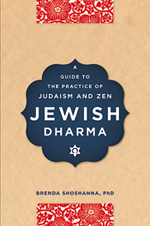 MANY CONVERTS to Buddhism feel a lingering attachment to their original faiths even as they pursue the path to enlightenment. For those who try to make room in their lives for both menorahs and mu, Brenda Shoshanna’sJewish Dharma: A Guide to the Practice of Judaism and Zen (Da Capo Press, 2008, $25.00 cloth, 320 pp.) offers insights on how the two practices can coexist and even inform one another. In chatty, often personal writing, Shoshanna, a psychologist and Zen practitioner, compares Jewish and Zen takes on self-discovery, charity, and mindfulness, finding common ground between traditions like Sabbath and zazen (sitting meditation), right speech and loshon hora (guarding your words).
MANY CONVERTS to Buddhism feel a lingering attachment to their original faiths even as they pursue the path to enlightenment. For those who try to make room in their lives for both menorahs and mu, Brenda Shoshanna’sJewish Dharma: A Guide to the Practice of Judaism and Zen (Da Capo Press, 2008, $25.00 cloth, 320 pp.) offers insights on how the two practices can coexist and even inform one another. In chatty, often personal writing, Shoshanna, a psychologist and Zen practitioner, compares Jewish and Zen takes on self-discovery, charity, and mindfulness, finding common ground between traditions like Sabbath and zazen (sitting meditation), right speech and loshon hora (guarding your words).
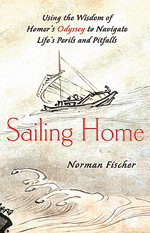 Norman Fischer’s Sailing Home: Using the Wisdom of Homer’s Odyssey to Navigate Life’s Perils and Pitfalls (Free Press, 2008, $25.00 cloth, 256 pp.) is equally concerned with incorporating a variety of religious and intellectual thought into the spiritual journey. While Fischer’s interpretation of The Odyssey centers primarily on Buddhism, Gertrude Stein and the Old Testament get quoted alongside the Lotus Sutra. This warm, expansive sensibility extends to Fischer’s own observations, many of which are gleaned from his experiences as a Zen teacher and practitioner. Remarking on the importance of allowing ourselves, like Telemachus, to become stalled in uncertainty, he writes, “It didn’t bother me that people stumbled into the Zen Center in their confusion… Whether they realized it or not, [they were coming] simply to wait.” Fischer’s book encourages us to engage with the mystery and resonance of metaphor in order to, like Odysseus, “return to the depth and truth of our living.”
Norman Fischer’s Sailing Home: Using the Wisdom of Homer’s Odyssey to Navigate Life’s Perils and Pitfalls (Free Press, 2008, $25.00 cloth, 256 pp.) is equally concerned with incorporating a variety of religious and intellectual thought into the spiritual journey. While Fischer’s interpretation of The Odyssey centers primarily on Buddhism, Gertrude Stein and the Old Testament get quoted alongside the Lotus Sutra. This warm, expansive sensibility extends to Fischer’s own observations, many of which are gleaned from his experiences as a Zen teacher and practitioner. Remarking on the importance of allowing ourselves, like Telemachus, to become stalled in uncertainty, he writes, “It didn’t bother me that people stumbled into the Zen Center in their confusion… Whether they realized it or not, [they were coming] simply to wait.” Fischer’s book encourages us to engage with the mystery and resonance of metaphor in order to, like Odysseus, “return to the depth and truth of our living.”
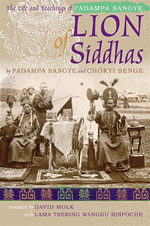 Although the 11th-century Indian master Padampa Sangye is best known as the teacher of Machig Labdrön (the Tibetan yogini who founded Chöd practice), he’s actually a charismatic and significant figure in his own right.Lion of Siddhas: The Life and Teachings of Padampa Sangye, translated by David Molk with Lama Tsering Wangdu Rinpoche (Snow Lion Publications, 2008, $18.95 paper, 338 pp.) is the first English translation of the biography and teachings of Padampa Sangye, a teacher regarded as a lineage guru by all Tibetan Buddhist schools. The biography, written in 1906 by Chökyi Senge, asserts that “Dampa” attained full awakening at age 290 (!), bringing the Buddha’s teachings to China and Chöd lineage to Tibet along the way. His eminently quotable teachings reflect a wise and curmudgeonly character who fought complacency and bucked convention, taking on female disciples, refusing to fear rebirth in hell (“As nature is empty, what’s the difference?”), and, on occasion, spurning clothing (despite his disciples’ less than-subtle signals).
Although the 11th-century Indian master Padampa Sangye is best known as the teacher of Machig Labdrön (the Tibetan yogini who founded Chöd practice), he’s actually a charismatic and significant figure in his own right.Lion of Siddhas: The Life and Teachings of Padampa Sangye, translated by David Molk with Lama Tsering Wangdu Rinpoche (Snow Lion Publications, 2008, $18.95 paper, 338 pp.) is the first English translation of the biography and teachings of Padampa Sangye, a teacher regarded as a lineage guru by all Tibetan Buddhist schools. The biography, written in 1906 by Chökyi Senge, asserts that “Dampa” attained full awakening at age 290 (!), bringing the Buddha’s teachings to China and Chöd lineage to Tibet along the way. His eminently quotable teachings reflect a wise and curmudgeonly character who fought complacency and bucked convention, taking on female disciples, refusing to fear rebirth in hell (“As nature is empty, what’s the difference?”), and, on occasion, spurning clothing (despite his disciples’ less than-subtle signals).
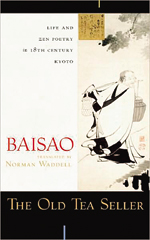 Such eccentricities would have likely been appreciated by Baisao, an 18th-century Zen priest and poet who left his monastery at age 49 to sell tea in Kyoto. His poems, letters, and memoirs are translated into English for the first time by Norman Waddell in The Old Tea Seller: Life and Zen Poetry in 18th Century Kyoto: Baisao (Counterpoint, 2008, $24.00 cloth, 208 pp.). To admirers of his independent thinking and humility, Baisao’s tea stall was a center of artistic and intellectual vitality. His letters prove crucial to understanding his life and work; of his decision to break the precept forbidding priests to earn a living, he wrote, “When the mind is empty of impurity, wherever you stand—even in a wine shop, fish market, brothel, or theater—is a Buddhaland…. Look at the priests of today…. For every eight or nine of ten, their minds still chase through the world’s red dust.”
Such eccentricities would have likely been appreciated by Baisao, an 18th-century Zen priest and poet who left his monastery at age 49 to sell tea in Kyoto. His poems, letters, and memoirs are translated into English for the first time by Norman Waddell in The Old Tea Seller: Life and Zen Poetry in 18th Century Kyoto: Baisao (Counterpoint, 2008, $24.00 cloth, 208 pp.). To admirers of his independent thinking and humility, Baisao’s tea stall was a center of artistic and intellectual vitality. His letters prove crucial to understanding his life and work; of his decision to break the precept forbidding priests to earn a living, he wrote, “When the mind is empty of impurity, wherever you stand—even in a wine shop, fish market, brothel, or theater—is a Buddhaland…. Look at the priests of today…. For every eight or nine of ten, their minds still chase through the world’s red dust.”
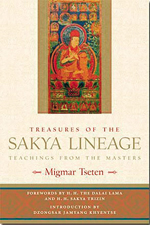 The Sakya school of Tibetan Buddhism is known for its emphasis on both practice and study. Treasures of the Sakya Lineage: Teachings from the Masters (Shambhala Publications, 2008, $18.95 paper, 288 pp.), a much-needed compilation by Harvard chaplain Lama Migmar Tseten, offers concise selections from Sakya masters past and present, as well as an account of the school’s long history. Among the book’s intriguing teachings are “The Great Song of Experience” by Jetsun Dragpa Gyaltsen, a 12th-century founder of the Sakya tradition whose verse appealed to lay practitioners and exasperated stuffy scholars, and Khenpo Appey Rinpoche’s instructions on how best to cultivate faith in Buddhist teachings.
The Sakya school of Tibetan Buddhism is known for its emphasis on both practice and study. Treasures of the Sakya Lineage: Teachings from the Masters (Shambhala Publications, 2008, $18.95 paper, 288 pp.), a much-needed compilation by Harvard chaplain Lama Migmar Tseten, offers concise selections from Sakya masters past and present, as well as an account of the school’s long history. Among the book’s intriguing teachings are “The Great Song of Experience” by Jetsun Dragpa Gyaltsen, a 12th-century founder of the Sakya tradition whose verse appealed to lay practitioners and exasperated stuffy scholars, and Khenpo Appey Rinpoche’s instructions on how best to cultivate faith in Buddhist teachings.